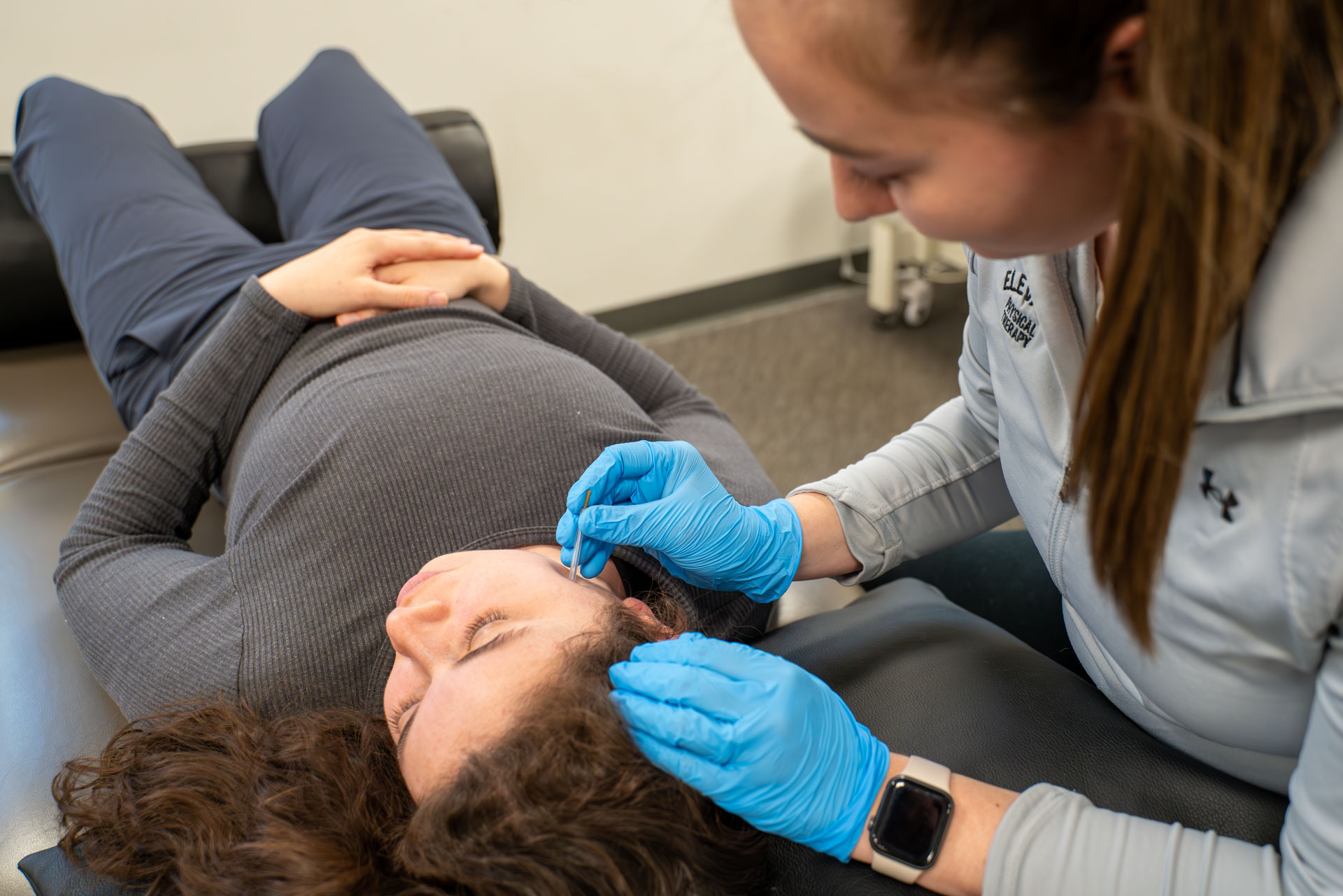Explainer
An estimated 75% of the U.S. population have experienced signs or symptoms associated with disorders involving the Temporomandibular Joint (TMJ), otherwise known as Temporal Mandibular Disorder (TMD). Most TMD and craniofacial pain (CFP) symptoms are temporary and fluctuate over time, requiring little or no professional intervention; but, an estimated 5-10% of the U.S. population will require professional treatment.
Physical Therapy is well recognized as an effective and conservative treatment for musculoskeletal disorders such as TMD and CFP. Elevate Physical Therapy is proud to have Stacey Gallagher, DPT who is not only passionate about treating TMD and CFP, but has also received training through the Level 1 and Level 2 “Evaluation and Treatment of Temporomandibular Disorders and Craniofacial Pain” courses. Stacey is working diligently to become one of the few Certified Cervical & Temporomandibular Therapists (CCTT) in New England!
Are you experiencing TMD?
Take this quiz.
Common symptoms of TMD:
- Headaches (tension or migraine)
- Pain behind the eyes or blurring of vision
- Unexplained tooth pain
- Earaches, congestion or ringing in ears
- Clicking, popping or grating sound in the jaw joints
- Limited opening or locking of the jaw
- Dizziness
- Pain when chewing
- Facial pain and/or numbness of face and head
- Neck and/or throat pain
- Difficulty in closing the teeth together
- Tired jaw
- Hearing loss
Common causes of TMD:
- Poor posture
- Neck and upper back restriction
- Tight facial/mouth muscles/myofascial trigger points
- Trauma or whiplash
- Your teeth and your bite
- Clenching or grinding
- Mouth breathing
- Parafunctional habits: nail biting, frowning, chewing on pencils, etc.
The benefits
- Alleviate jaw pain, headaches, facial discomfort, and neck tension through targeted physical therapy techniques.
- Eliminate clicking, popping, and locking while improving your ability to eat, speak, and yawn comfortably.
- Address the root causes by correcting head, neck, and jaw positioning for long-lasting relief.
- Conservative, evidence-based therapy that avoids surgery or invasive procedures.
- Learn exercises and techniques to manage symptoms independently and maintain jaw health long-term.
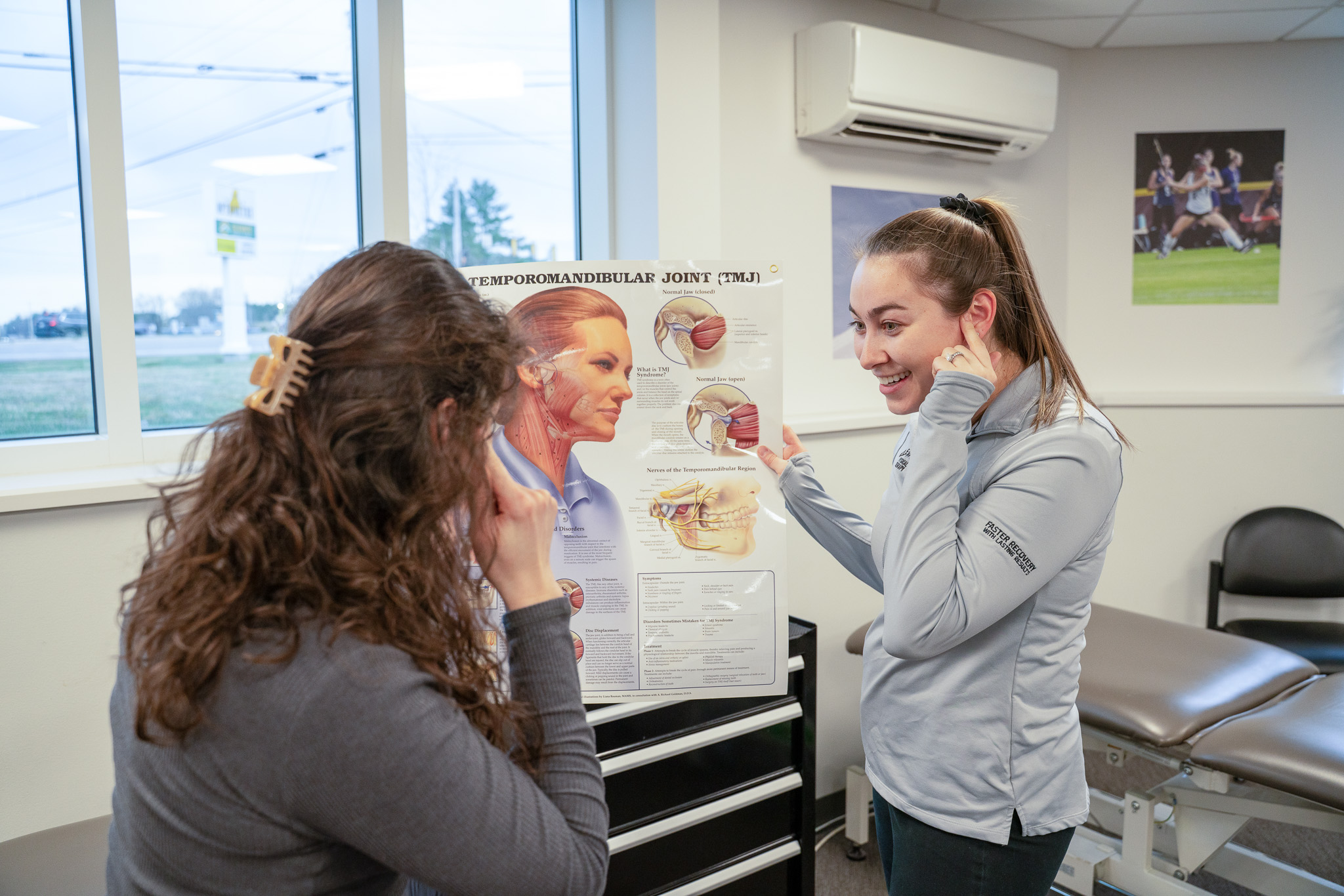
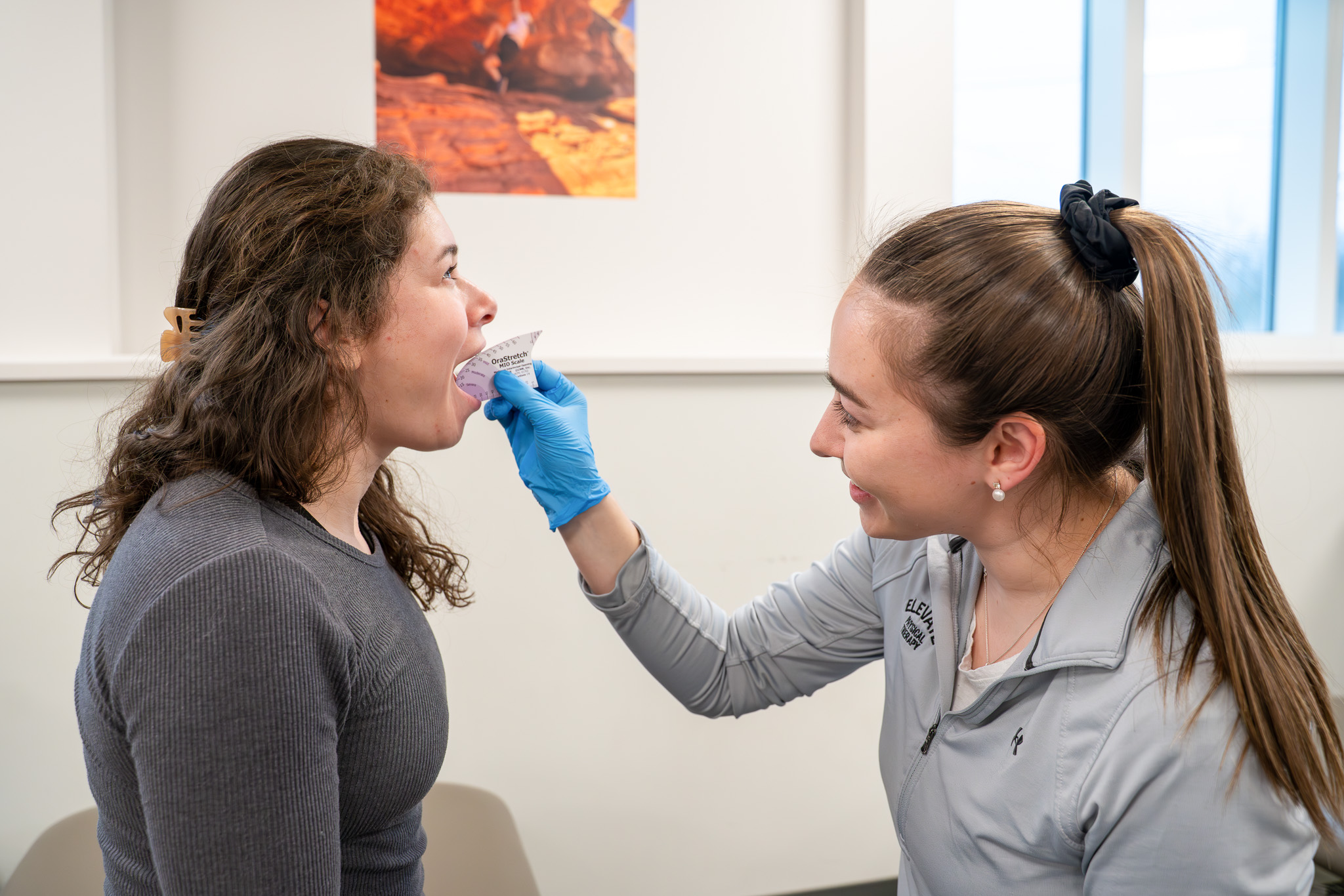

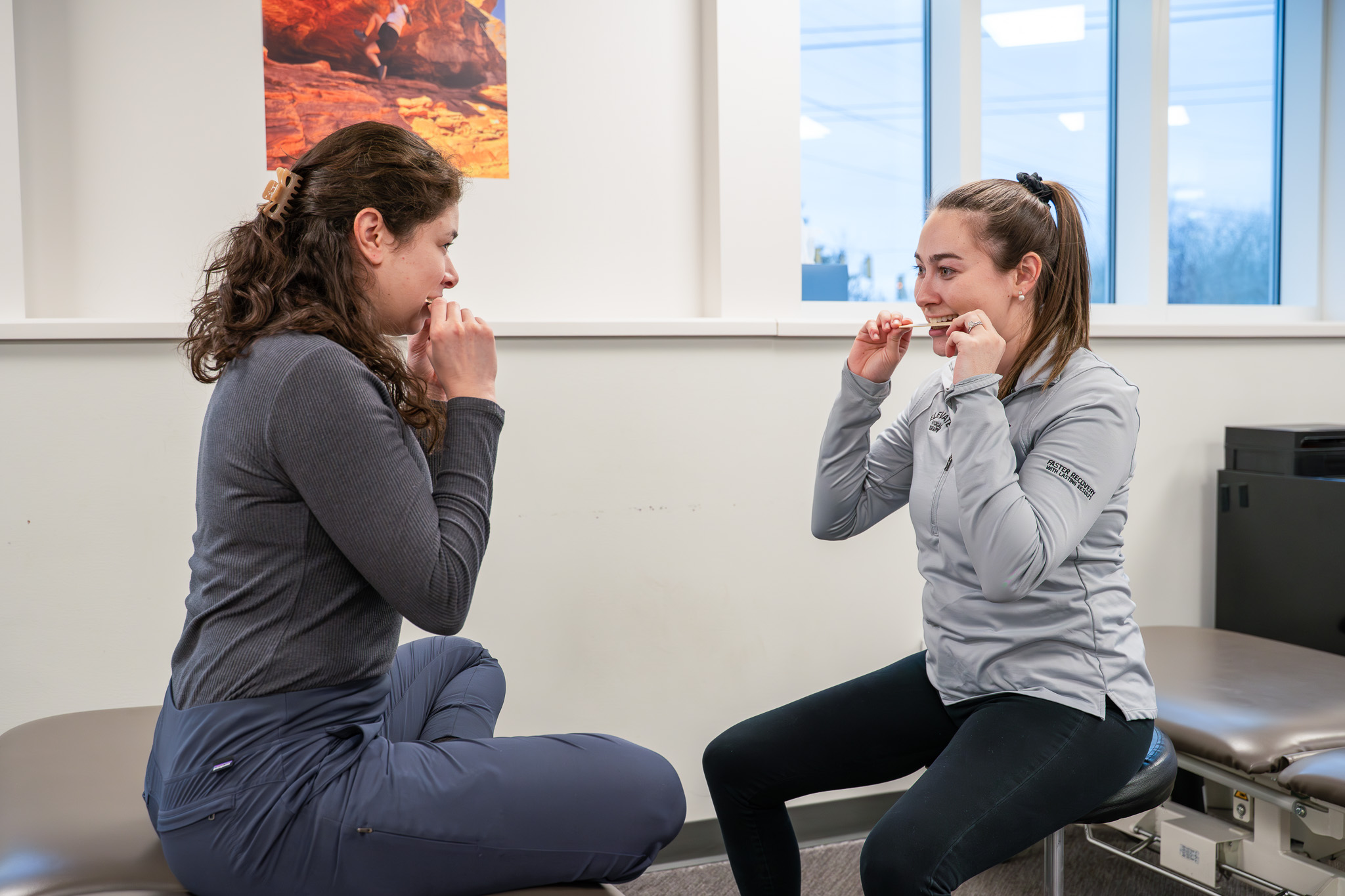
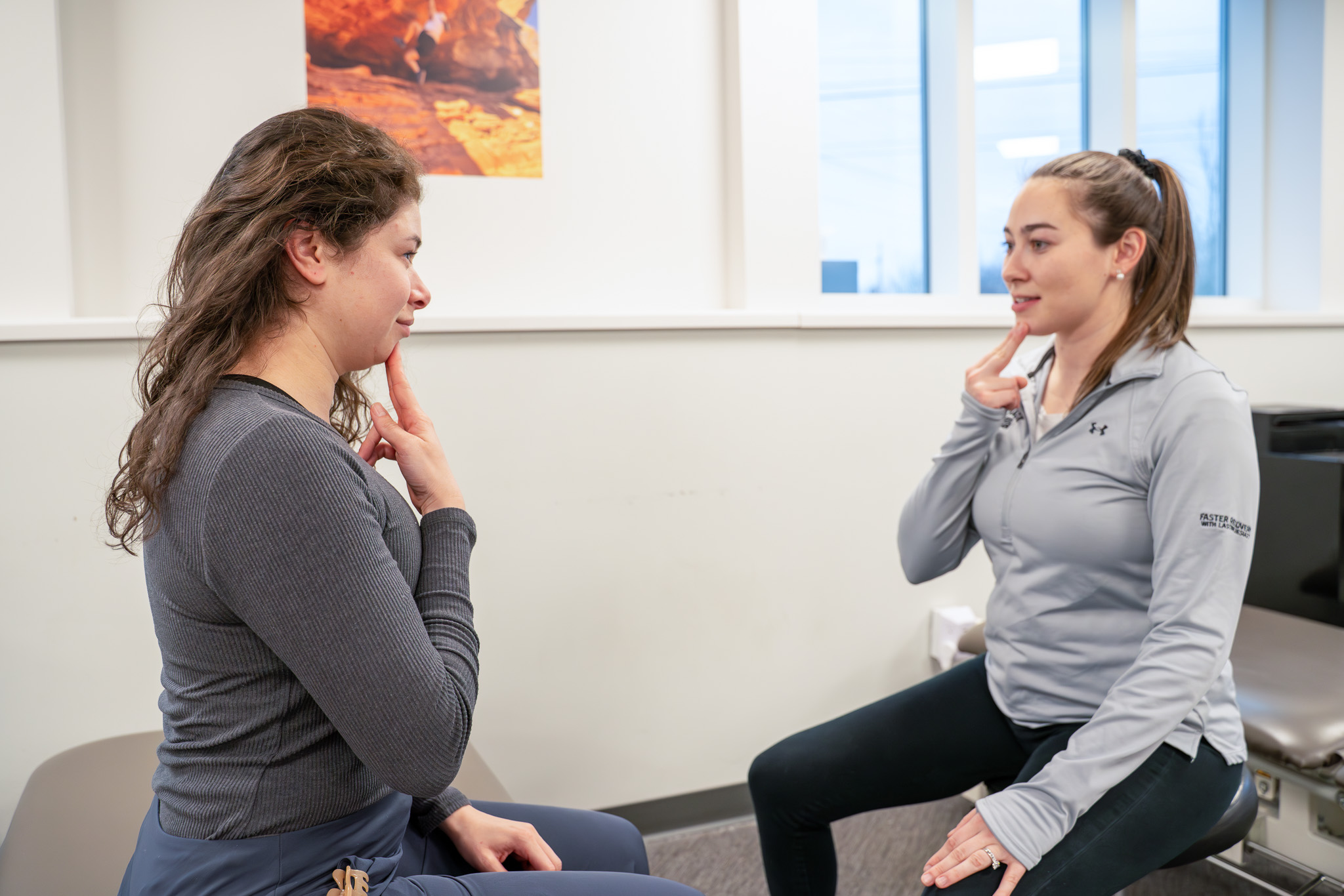

FAQs
What they say




